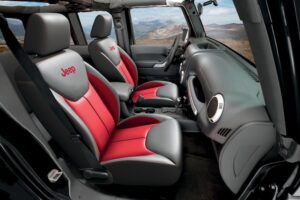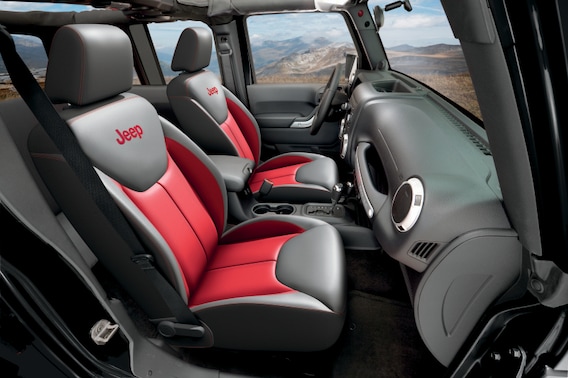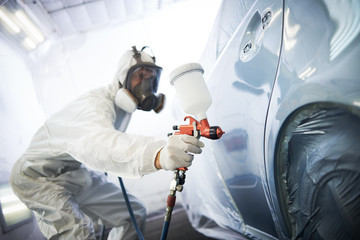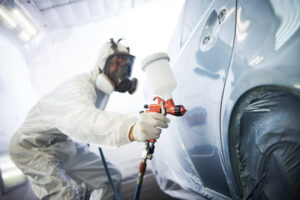Getting the right Jeep Parts can help your car perform its best. However, these upgrades can be expensive, so it’s important to consider your budget when purchasing these parts.
If you are looking for high-quality Jeep parts at affordable prices, try out aftermarket products. These parts are durable and will last a long time.
Jeep Parts can be quite expensive, but you can save money on some parts if you shop around. There are many aftermarket suppliers who offer high-quality Jeep parts at a lower price than the original equipment manufacturer. Whether you need an aftermarket replacement or a full suspension upgrade, you can find the right parts at a great price with little research.
Jeeps have a rich heritage and are one of the most popular cars on the market today. They are rugged and versatile, making them a good choice for anyone looking for a fun and safe ride. But like any other car, they can be prone to breakdowns and require maintenance and repairs from time to time. This is why it’s important to keep up with your Jeep maintenance routines and have a good understanding of the common problems that can occur.
The Jeep Renegade is a relatively affordable vehicle to repair and maintain. The company’s commitment to quality and durability has made it a solid investment, and the vehicle’s low warranty cost is also attractive. The Jeep Compass is another model that can be easily repaired and maintained at a reasonable price. These vehicles benefit from the huge Jeep aftermarket industry, which offers a wide variety of replacement parts and accessories.
If you’re thinking about buying a used Jeep, be sure to inspect it thoroughly before you purchase it. Look for any signs of damage and ask the seller to provide a service history. This will help you determine if the Jeep has been well-maintained and is in good condition.
Jeep Wranglers are expensive to repair and maintain, but they’re worth it for the experience and style that they offer. The brand is the granddaddy of the SUV and 4×4 market, and it has a reputation for combining performance with safety. The company’s history with the military also helped them create vehicles that are both durable and reliable.
Some models, such as the Rubicon, are more expensive than others. They have many upgrades that are designed for off road use, including locking differentials, disconnectable sway bars, and other features. But if you’re not planning to take your Jeep off road, these upgrades aren’t necessary and will just increase the overall cost of ownership.
Quality
Whether you’re blazing trails or just cruising down the highway, Jeeps are built for off-roading and can take on tough conditions. That’s why it’s important to choose quality parts and accessories to ensure your vehicle can meet its full potential. These modifications will increase the performance and durability of your Jeep. Some of the most popular Jeep parts include wheel and tire upgrades, lighting upgrades, interior enhancements, and suspension upgrades. JEGS carries a large selection of Jeep parts and accessories that are sure to meet your needs.
There are also many other parts and accessories that will add to the functionality of your Jeep. Some of these include fuel injectors, air filters, and cold air intake systems. These upgrades will help improve your fuel economy and increase your power, making your Jeep more suited to off-roading conditions. You can also add a snorkel to your Jeep, which will allow it to breathe cleaner and cooler air.
Other Jeep accessories, such as exhaust systems, fuel injectors, and brake kits, will also help improve the performance of your vehicle. These upgrades will also improve the look of your Jeep. The Jeep company has a reputation for producing durable vehicles, so you can trust their products.
The best place to buy Jeep parts is online. There are several online retailers that offer a wide variety of Jeep parts and accessories at affordable prices. They also have a good selection of Jeep manuals and service guides. Some of these companies even provide free shipping on orders over $100.
Another option is to visit a local Jeep dealer. They can offer you the latest and greatest in Jeep parts, and they may have a mechanic on staff to help with repairs. They can also provide you with a detailed repair history, which is invaluable if you’re looking to sell your Jeep in the future.
When it comes to Jeep parts, you should always go with the original equipment manufacturer (OEM) if possible. OEM parts are guaranteed to fit your vehicle and will be covered by a warranty. Some of the best OEM manufacturers include Mopar, Crown Automotive, and RT Off-Road. If you’re looking for Jeep parts that aren’t OEM, you can find them from aftermarket manufacturers such as Smittybilt and Rugged Ridge.
Fitment
When selling auto parts and accessories, it’s important to have accurate fitment data for all your products. This information helps consumers find parts that will fit their vehicle, and ensures that you’re selling high-quality products. The best way to get accurate fitment information is to use a third-party solution like myFitment. These solutions offer features such as automated fitment bulk importing and monthly data revalidation. They also help businesses stay ACES and PIES compliant, which is essential for online sales.
Jeep Parts are a great way to personalize your vehicle and make it stand out from the crowd. These modifications can include suspension upgrades, performance enhancements, and a variety of other accessories that will enhance the look of your vehicle. They are available in a wide range of styles, from aggressive grille designs to rugged bumpers. Jeep enthusiasts can also customize their vehicles with a variety of tire and wheel upgrades.
The right Jeep tires can provide a comfortable ride and great off-road traction. Many people choose to install mud-terrain tires, which are designed for off-road driving and have large treads that can handle dirt and rocks. Other popular tire options for Jeeps are highway tires and all-terrain tires. If you’re looking for a great deal on Jeep tires, check out the selection at 4WP. They have a huge inventory of Jeep rims in various sizes, from 15 inches to 20 inches. They also have a variety of bolt patterns, including 5×5 and the more common 4×4.
Whether you’re going off-road or on the highway, a good radiator is essential for your Jeep. This part helps keep your engine cool by cooling the oil and preventing overheating. It’s also important to have a hood catch set, which can prevent hood flutter and reduce air resistance, which can improve gas mileage and speed.
JEGS offers the top-rated Jeep accessories for Bethesda MD, Washington DC, Alexandria VA, Chevy Chase MD, Potomac MD, Silver Spring MD and Vienna VA drivers. Their experienced technicians can help you select the right parts for your vehicle. They will also give you a free estimate.
Warranty
Jeep is a well-known brand of SUVs that has been around for more than 80 years. This iconic brand has long been associated with freedom and adventure, which is fitting because its slogan is “Go Anywhere. Do Anything.” Jeep parts are available at dealerships in Dickinson, ND, and the manufacturer offers a variety of warranty coverage options. This includes a bumper-to-bumper warranty and a powertrain warranty, which cover many parts of your vehicle. The manufacturer also offers roadside assistance, which is helpful in the event that you need help on the road.
Jeep’s basic limited factory warranty, also known as the bumper-to-bumper warranty, lasts for three years or 36,000 miles. This covers the cost of repairs for any original part that is defective in material or workmanship. It does not include tires or other items added after the car was manufactured, and it excludes some maintenance services, such as oil changes.
The powertrain warranty covers the engine, transmission, and front-, rear-, and four-wheel drive systems for Jeep vehicles. It is backed by the Mopar parts, service, and customer care division of Fiat Chrysler Automobiles. This division is responsible for providing the genuine parts used in Jeep vehicles.
Jeep also offers a corrosion warranty and an emissions warranty. The corrosion warranty provides protection from rust and other damage to the body panels of your Jeep. The corrosion warranty lasts for three years or unlimited mileage, and the emissions warranty lasts for five years or 60,000 miles.
In addition to the warranties offered by Jeep, the company offers a variety of third-party extended warranties for its vehicles. These extended warranties offer a range of benefits that the factory-backed warranties do not, including choice of repair shop and mechanic, flexible payment terms, and longer term coverage.
A reputable extended warranty provider can save you money in the long run by offering an affordable plan that includes roadside assistance and additional coverage for parts like the alternator, radiator, and air filter. Most of these plans also offer a money-back guarantee. The best thing about these plans is that they don’t void the original manufacturers’ warranty.


 Primer
Primer